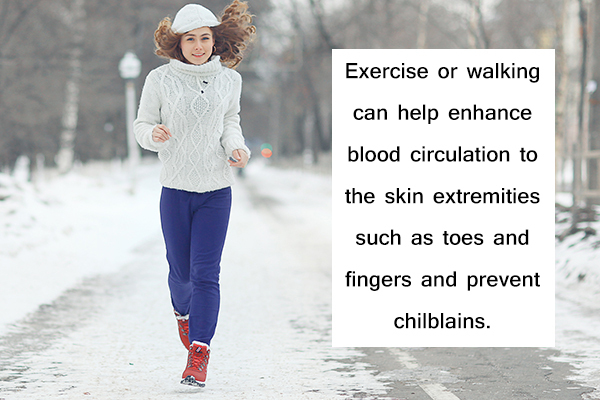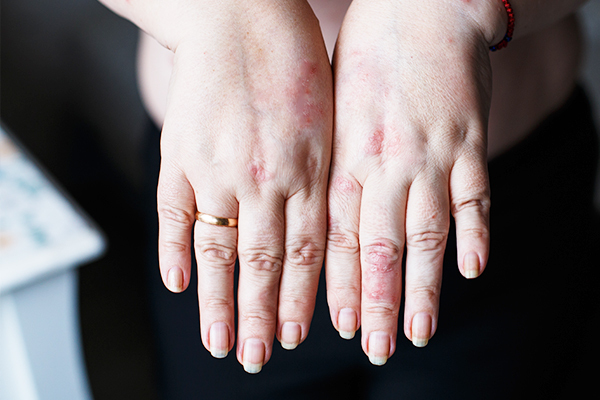In this article:
Chilblains are a painful inflammation of small blood vessels in skin extremities such as toes or fingers. It leads to a reddish-blue discoloration, itching, or inflammation in the affected area. Chilblains are very common and are usually not very serious.

Most cases of chilblains resolve on their own in one to three weeks. Here is a list of certain home treatments you can try to soothe the irritated skin.
Home Treatment for Chilblains
In general, chilblains may not need any treatment and go on their own within 7 to 14 days. However, you can do the following things to get instant relief from them:
- Lanolin is a type of wax extracted from animal glands. It helps preserve body heat and soothe itching or irritation.
- You can rewarm the affected area gently. Rewarming can make you feel better and get relief from the pain and discomfort. However, make sure not to massage, rub, or apply heat directly. These can aggravate the problem even more by irritating the skin on the outside.
- If you have an itching sensation right at the spot or around it, you can apply a lotion to get relief from the same.
- Clean the affected area of your skin with an antiseptic lotion and cover it with a bandage. It will help you prevent infection.
Lifestyle Changes and Measures to Prevent Chilblains

There are certain measures you can take to prevent chilblains:
- Avoid direct skin exposure to very cold weather.
- You can soak your hands in warm water before exposing them to cold temperatures.
- Exercise or walking can help enhance blood circulation to the skin extremities such as toes and fingers and prevent chilblains.
- Do not scratch an itchy lesion.
- Stop smoking as smoking directly affects your blood circulation. (1)
- Avoid wearing tight or damp clothing in winters.
- Diabetic patients should check their hands and feel regularly to make sure they do not have chilblains as they may not be able to feet it due to diabetic neuropathy.
- Wear warm clothing in layers such as sweaters, mufflers, and jackets to help preserve body heat in winters. (2)
- Always wear shoes or socks in cold weather.
Most-Asked Questions About Chilblains
What do chilblains feel like?
Chilblains are small discolored patches that may itch or burn. They usually occur in skin extremities such as earlobes, fingers, toes, etc. due to exposure to cold or chilly air.
What to avoid doing if you think you have chilblains?
Avoid applying direct heat on the affected area if you have chilblains as this may lead to further harm. Warming up the area too quickly can lead to blood leaks in small blood vessels due to vasodilation.
Does getting chilblains show that you may have diabetes?

Certain conditions like diabetes can cause you to have poor blood circulation and slowed wound healing. However, developing chilblains does not mean you have diabetes but it may be better to get yourself tested.
Final Word
Chilblains is a minor skin condition and usually tends to resolve on it’s own. If you suffer from chilblains, you can try any of the simple home treatments given above until you find one that works for you. Make sure to consult a doctor if your symptoms do not resolve in a couple of weeks.

- Was this article helpful?
- YES, THANKS!NOT REALLY


